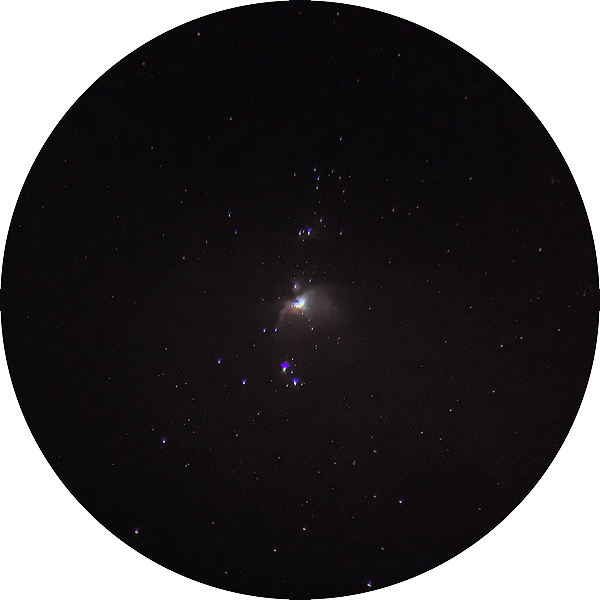iPhone Astrophotography 12x50 Binoculars Piggyback
Posted: 22 March 2022
Saturday, 19 March 2022, was cloudy and windy. Sunday morning, 20 March, was cloudy and very windy. With rain in the forecast, I put the Dome Cover
 ON. Light rain began Sunday afternoon, followed by a brief thundershower (total 0.28"). The sky cleared on Monday, 21 March.
ON. Light rain began Sunday afternoon, followed by a brief thundershower (total 0.28"). The sky cleared on Monday, 21 March.
|
Open: Monday, 21 March 2022, 1811 MST Temperature: 65°F |
Session: 1738 Conditions: Mostly clear, hazy, breezy |
Equipment:
12" f/8 LX600 w/StarLock
2" 24mm UWA eyepiece
12x50 binoculars
Camera:
iPhone 13 Pro Max
Dome Cover OFF.
1820 MST: LX600 ON, StarLock OFF, High Precision OFF.
Mounted Vortex 12x50 binoculars piggyback on the 12" telescope using the ScopeStuff Camera Adapter. Attached the iPhone 13 Pro Max with the LiDAR Cover on the binoculars using the Levenhuk Smartphone Adapter.

1834 MST: Setting Sun and some clouds along the western horizon, taken with the iPhone 13 Pro Max.

1839 MST: Sunset.
Relaxed on the observatory patio bench while waiting for the sky to get darker.
1900 MST: Back inside the observatory. Breezes had calmed down now.
Viewed M42 (Orion Nebula), 102X. The Trapezium was very nice and there was some nebulosity faintly visible. Checked the alignment of the piggybacked binoculars. M42 was in the center of the field-of-view.
Slewed to M31 (Andromeda Galaxy). It would be my first iPhone imaging target. It was not yet visible in the bright twilight sky and would likely be into the trees by the end of Astronomical Twilight (1958 MST).
Relaxed on the bench some more.
1928 MST: Took this handheld iPhone photo of the constellation of Leo in the eastern sky using the Camera app (Night Mode, 3 seconds, 1X lens).

1930 MST: Back inside the observatory.
Viewed M31 (Andromeda Galaxy), 102X and 12x50 binoculars. The galaxy was visible but getting close to the tree limbs. I decided I had better try to get M31 imaged before it was obscured. Mounted the iPhone on the binoculars.
1935 MST: StarLock ON.
I began imaging several objects with the iPhone through the binoculars, afocal 12X, StarLock autoguided, using the iOS app NightCap Camera (Long Exposure, Light Boost, 1sec shutter speed, 1 minute exposure, 1X lens).
M31 Andromeda Galaxy (ISO 32000)

M45 Pleiades star cluster (ISO 16000)

M42 Orion Nebula (ISO 8000)

M44 Praesepe, Beehive Cluster (ISO 16000)

I also imaged the Leo Triplet of Galaxies (M65, M66, and NGC3628 Sarah's Galaxy), StarLock autoguided, afocal 12X, NightCap Camera (Long Exposure, Light Boost, ISO 32000, 1sec shutter speed, 1 minute exposure, 1X lens).

Mouseover or tap on image for labels
2028 MST: StarLock OFF.
Removed the iPhone from the binoculars. Viewed the Leo Triplet of Galaxies, 12x50 binoculars. Only M66 was visible to the eye.
Viewed the Leo Triplet of Galaxies, 102X. All three galaxies were visible in the field-of-view of the 2" 24mm UWA eyepiece.
2045 MST: LX600 OFF.
|
Close: Monday, 21 March 2022, 2053 MST Temperature: 47°F |
Session Length: 2h 42m Conditions: Clear |
Comments are welcome using Email. Twitter users can use the button below to tweet this report to their followers. Thanks.
Cassiopeia Observatory Home Page
Copyright ©2022 Michael L. Weasner / mweasner@me.com
URL = http://www.weasner.com/co/Reports/2022/03/22/index.html
